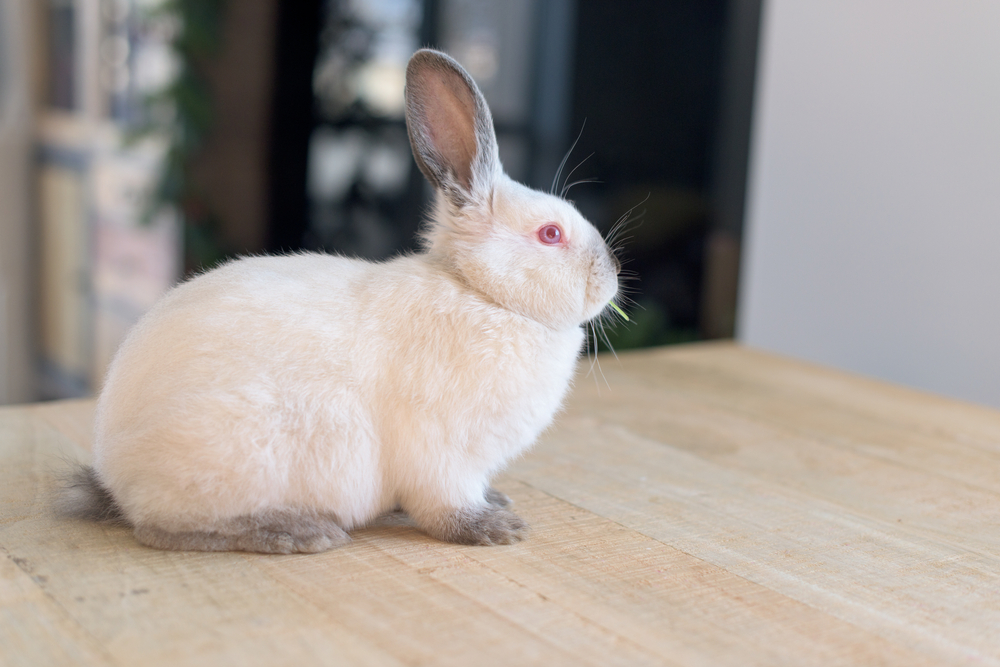
Shopping for a pet? Rabbits are fast becoming a popular option for anyone looking for a pet, and why shouldn’t they? Rabbits are cuddly, cute, and downright adorable. Just looking at these furry little creatures is bound to make you smile. Nonetheless, you need to do some research and learn how to take care of a rabbit before you decide to adopt one, as you certainly don’t want to neglect your pet in any way. Even a small mistake on your part can lead to health issues or other problems for your rabbit, and you don’t want that to happen.
Here are all the things that you need to know if you are planning on bringing a new pet bunny into your family:
Diet
As they are herbivores, rabbits eat plants, and their diet usually consists of large amounts of leaves and grass, along with some fruits and flowers. The most important part of a rabbit’s diet is grass hay, such as barley, rye, oat, meadow, timothy hay, and Bermuda grasses. It would help if you made sure grass hay is available to your rabbit at all times because it is rich in proteins, minerals, and vitamins. It wears down the teeth appropriately via chewing, so the rabbit doesn’t chew other objects and ensures healthy GI motility.
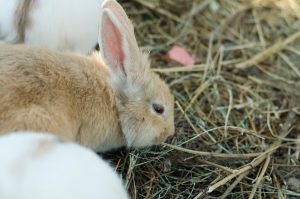
Grass Hay
Grass hay also prevents your rabbit from overeating and becoming obese because it creates a full feeling. You should feed the rabbit at least two different types of grass hay, and it is best to get sundried hay, as opposed to commercially dried one because the latter has more nutrients. You will also find legume hay available, such as clover and alfalfa, but these are not highly recommended because they have more calcium, protein, and calories than a regular pet rabbit needs. Thus, it can lead to obesity and GI disorders.
Green Foods
Green foods are also an essential element of a bunny’s diet. These include kale, dandelion greens, romaine lettuce, parsley, Brussel sprouts, collard greens, broccoli, and celery. Not only can they offer the same nutrients like those found in hay, but they also offer a broader selection of nutrients and incorporate water into the diet. This is a must because bunnies tend to drink less than they should. Fruits and vegetables are other items to include in your rabbit’s diet as treats. You can also use them as rewards when training your rabbit. These are not only healthier but will also cost you less than the commercial rabbit treats in the market.
Dried Fruits
Some natural treats that you can give to your bunny include carrots, cranberries, cherries, red or green bell peppers, peach, squash, mango, blueberries, blackberries, pineapple, and raspberries. Dried fruits can also be given, but not in very high quantity. Grapes and bananas should be avoided because rabbits may stop eating everything else and get hooked on these.
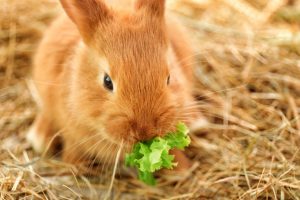
What To Avoid
Keep commercial pellets limited because they have low water content, don’t promote normal tooth wear, and don’t create the feeling of fullness. Avoid giving your rabbit foods that include fatty foods and high starch, such as cereals, bread, refined sugar, oats, nuts, corn, seeds, beans, peas, chocolate, wheat, and other grains. Lastly, you should ensure that water is available to your rabbit at all times and change it daily. If the water container is dirty, it can become a breeding ground for bacteria. There is no need to give your rabbit any nutritional or vitamin supplements because these will be included in their diets
Housing
The cage you choose for your rabbit should have enough space to easily let them stand on their hind legs without hitting the top with their head. It should also have enough room for a resting area and litter box and metal or any other indestructible material. The cage should also be easy to clean, and you should keep it in a well-ventilated and cool area. You can also cage them outdoors, but it is not recommended. Keeping them outside means you need to protect your rabbit from extreme temperatures and precipitation.
Make Sure It Is Safe
You also need to protect your bunny from predators, such as raccoons, coyotes, and dogs. Keep the cage clean so no parasitic insects are attracted. You can insulate with straw bedding in the winter. However, you should bear in mind that you shouldn’t keep your pet rabbit caged at all times. Your rabbit will stay healthy and safe from behavioral and physical disorders with some daily exercise. Let them out every day in an exercise area for jumping, running, and moving around at least for a couple of hours.
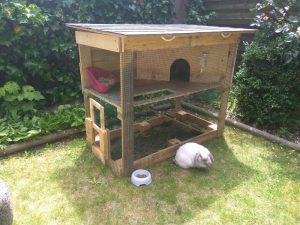
Plenty Of Room For Your Rabbit To Move Around
If you don’t want to give your pet access to your home, you can buy a pen for them or even make one of your own. If you decide to let them run through the room, make sure you make it rabbit-proof. This means blocking escape routes, blocking and covering electrical cords, and covering furniture to protect it from claws or teeth marks. Also, get rid of all toxic plants, insecticides, rodenticides, and other toxins that your rabbit may reach.
You can easily litter box train your rabbit. Restrict them to a small area and keep a litter box in the corner, preferably where they have already gone to the bathroom. You should ensure that the rabbit can easily get in and out of the litter box. Add some droppings to it, along with hay, to encourage your bunny to use it as rabbits usually pass stool while eating. Use pelleted litter as the litter box’s bedding. It is digestible if eaten and is also non-toxic. Don’t use clumping kitty litter or clay because it could lead to fatal intestinal blockage if the rabbit ingests it.
A Quiet Place For Your Rabbit
A rabbit’s environment should also include a hiding/resting area. Some rabbits are good with a box full of hay, while others may prefer an enclosed box. You can use a cardboard box, a litter pan, or a straw or wicker basket. Lastly, you also need to provide your rabbit with plenty of toys to wear down their teeth and for mental stimulation.
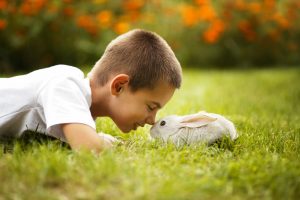
Chewing Toys For Your Rabbit
The perfect chewing toys for a bunny include wooden chew toys made for birds, dry branches from untreated trees, and unpainted, untreated straw or wicker baskets. Rabbits also like things that can move, such as small piles of shredded paper, toilet paper rolls, air-filled balls, or small empty cardboard cartons. You can also encourage foraging behavior in your bunny by hiding treats in their toys.
Handling
Your rabbit has a very fragile backbone, and its hind end needs support because even a strong kick can fracture it. You shouldn’t pick up your bunny by the ears because it is painful and just not needed. Scoop them from under the chest and grasp the loose skin over their shoulders. Lift them off the floor by placing your other hand under their back legs. When you are still learning how to handle a rabbit, it is best to sit close to the floor. This way, if the rabbit does jump out of your hands, they won’t hurt themselves.
Spaying and Neutering
Just like your dog or cat, you also need to spay and neuter your pet rabbit. The ideal age is when the rabbit is between 4 to 6 months old, just before they hit sexual maturity. Your bunny should be examined by a veterinarian before anesthesia to ensure they are healthy for surgery. Spaying can protect your bunny from cancer, along with a number of other uterine diseases. It is also essential in a home that has both male and female rabbits, as this can prevent a pregnancy.
Follow this guide, and you will have no trouble taking care of your pet rabbit and ensuring a long and healthy life.






